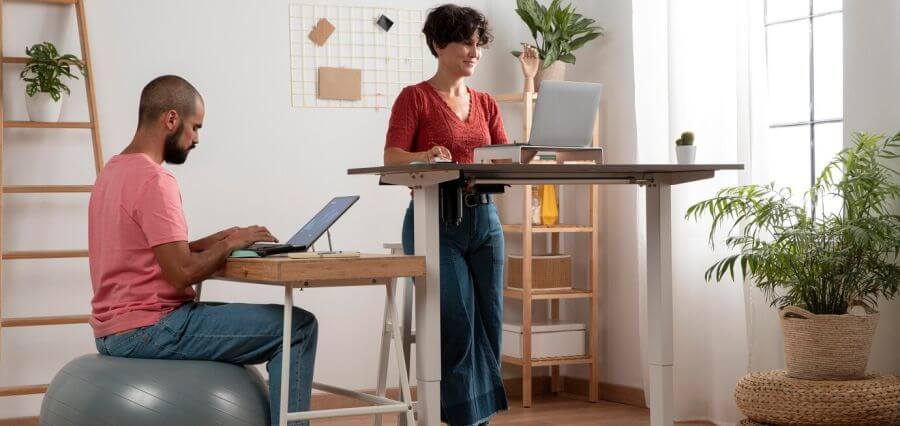The modern workspace is evolving, with more people becoming aware of the importance of ergonomics and its impact on health. Traditional desks that keep workers seated all day are now being reconsidered in favour of more dynamic solutions. One such solution gaining popularity is the sit-stand desk. This creative workplace furniture encourages a more active lifestyle by enabling users to switch between sitting and standing throughout the day.
A Sit Stand Desk offers several health benefits beyond reducing sitting time. Many health professionals advocate for these desks because they address various physical and mental health concerns. With prolonged sitting linked to numerous health issues, incorporating periods of standing into the workday can be a game-changer. Now, explore the critical health benefits of using this and how it can transform your work experience.
1. Lowers Risk of Obesity and Weight Gain
One of the most significant benefits is its potential to help manage weight. Standing more often during the day increases the number of calories burned compared to sitting. Even small amounts of movement while standing, such as shifting weight or pacing, can contribute to this effect. Over time, these additional calories burned can support weight control and lessen the risk of obesity. While this might not seem like a large number daily, it adds up over the long term, helping weight control and overall health.
2. Lowers the Risk of Heart Disease
Research has shown that sitting for long periods can raise the risk of cardiovascular disease. Studies have shown that those who sit for extended hours each day are at a higher risk of developing heart-related issues compared to those who incorporate more standing and movement into their routines. Using this desk helps mitigate this risk by promoting regular changes in posture and encouraging more movement throughout the day. This can improve circulation and reduce the strain on the cardiovascular system, ultimately supporting heart health.
3. Reduces Back and Neck Pain
Many office workers experience chronic back and neck pain due to poor posture and prolonged sitting. It can alleviate these issues by allowing users to switch positions frequently. This helps to engage the back and core muscles, reducing the pressure on the spine and alleviating discomfort. This flexibility promotes better posture and reduces the likelihood of developing musculoskeletal problems associated with sitting for long periods.
4. Enhances Mood and Energy Levels
Standing more during the workday can positively impact mood and energy levels. Employees who use it often report feeling more alert and less tired. Moving can increase blood flow and oxygen to the brain, enhancing cognitive function and productivity. Additionally, incorporating standing into the daily routine can reduce feelings of stress and anxiety. Standing and moving about releases endorphins, like little mood enhancers the body makes. A happier workplace and better mental health can result from this.
5. Boosts Productivity
While standing might seem distracting or tiring, many users find this desk enhances their productivity. Alternating between sitting and standing helps prevent physical discomfort and fatigue from staying in one position too long. This comfort can lead to better focus and efficiency in completing tasks. Also, if you’re an office worker, getting up and moving about a little more throughout the day will aid you stay energised and lessen the afternoon slump. Employees can maintain higher productivity by feeling more comfortable and energised.
A Sit and Stand Up Desk provides many health advantages, enhancing physical and emotional wellness. Embracing the flexibility of alternating between sitting and standing can lead to a healthier, more active lifestyle, making workdays more dynamic and enjoyable. This simple change can significantly reduce the adverse effects associated with prolonged sedentary behaviour.














